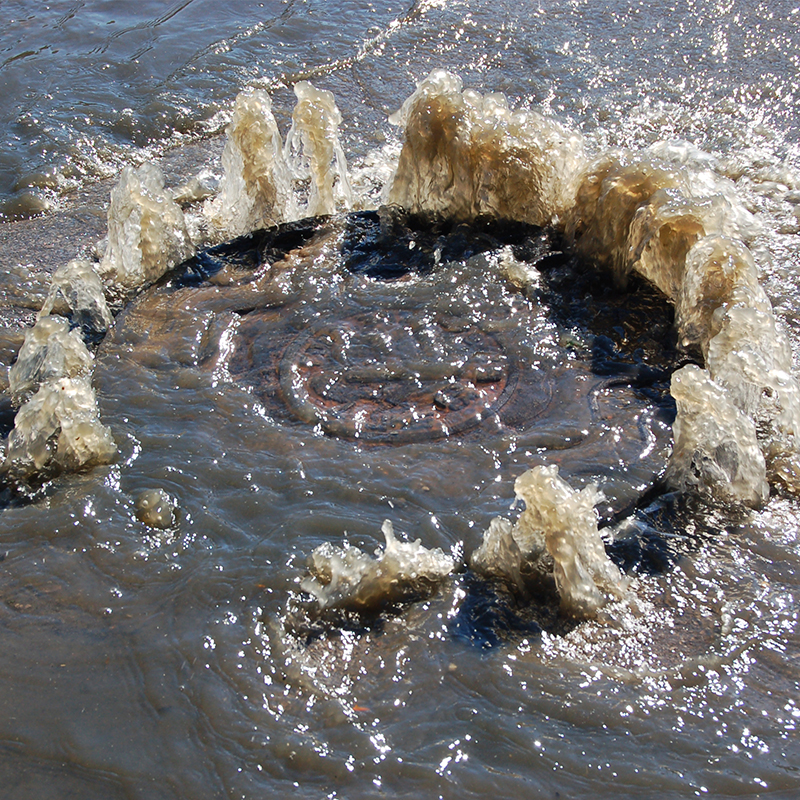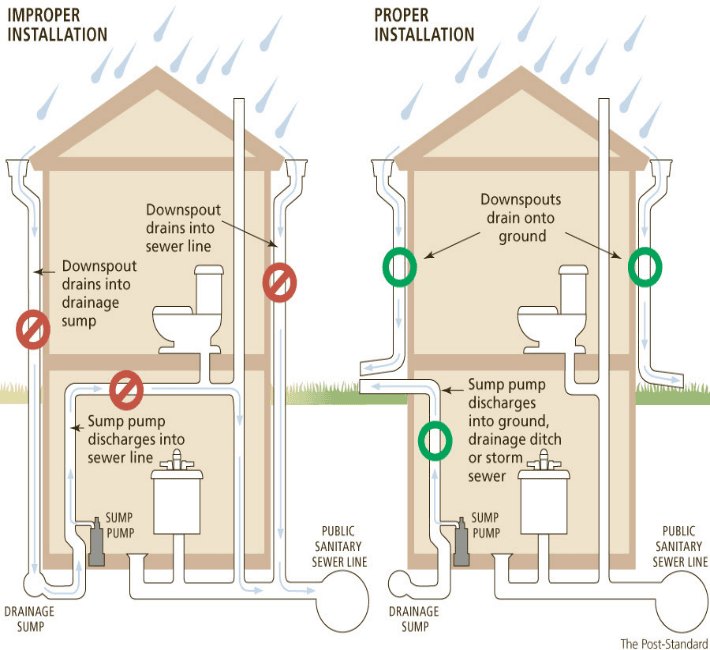

Keeping Rainwater Out of the Sewer System
Excess rainwater or snow melt entering the sewer system places an additional burden on sanitary sewer systems and wastewater treatment facilities. Sanitary Sewer Overflows (SSOs) can occur when wastewater flow volumes exceed the design capacity of a sanitary sewer system, pump station, or wastewater treatment plant. Sanitary sewer systems can also be damaged when they are forced to transport larger volumes of flow than they have been designed to handle. Excess flows during and after rainstorms can overburden treatment plants and impact how well they treat the wastewater before it is returned to the environment, and it also increases the costs to pump and treat the excess water.
What is Infiltration and Inflow and Why is It Important?
Infiltration is unwanted flow that enters sanitary sewers from cracks or breaks in sewer pipes below grade and is due to deteriorated pipes. Infiltration comes from excess water or groundwater that enters the pipe and uses up conveyance capacity of the pipelines. The infiltration has to be treated at the wastewater treatment plant and increases pumping energy costs and treatment costs.
Inflow is unwanted water that enters sanitary sewers from above-ground sources. This occurs during rainstorms or snow thaws due to leaky manhole covers, combined stormwater/wastewater connections and buildings that may have roof, basement stormwater sump pumps, yard, area, or foundation drains inappropriately connected to sanitary sewers. Any extra water entering the wastewater collection systems from above ground sources, or stormwater sumps either intentionally or unintentionally is referred to as inflow.
Sewage Overflow Prevention:
Homeowner Checklist
- Do not connect stormwater sump pumps to the sanitary sewer.
- Do not connect roof drains and gutters to the sanitary sewer.
- Do not connect foundation drains to the sanitary sewer.
- Keep all clean outs capped, this will help keep unwanted water out of the sanitary sewer system.
- Keep all plumbing traps full of water to prevent sewer gas from entering your home.

Working with Our Member Communities
Keeping Rainwater Out of the Sewer System
As we do not own the sanitary sewers in our member communities, we are not able to repair sewer laterals or breaks in sewer pipes outside of our main gravity interceptors and force mains, except as directed by our member communities.
Each member community manages its own sewer system, responsible for collecting wastewater from individual homes. These communities are required to comply with Massachusetts regulations to prevent rainwater from entering the sewer system and have active programs in place to repair leaking pipes and eliminate sump pumps and other sources of rainwater infiltration.
